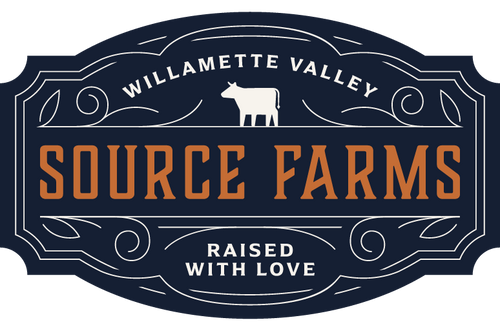As a Matter of Fat
This was not always the case! 40 years ago, Fat was the villain. Spurned by a congressional hearing lead by Sen. George McGovern in 1976 and supported by academics and holistic health gurus, a consensus was formed, “fat=bad”. It was from this meeting that Congress adopted the first official diet guidelines for the American public, these guidelines are perhaps most recognizable in the form of the Food Pyramid that Millennials like me were taught to follow through posters in our elementary school lunchrooms; an image that would make the ketogeneses enthusiasts among us balk.

So, why the obsession with slandering food?
In the early 1900s industrial food producers invented methods of extracting oil from vegetables and discovered the process of hydrogenation. Combining vegetable fats with hydrogen created a new, less expensive substitute for animal fats that was more shelf stable than its counterpart. Food producers fell in love with the cheap and easy to use ingredient. Then began a marketing campaign that we still see the effects of today. You’ve likely heard the slogan, “I can’t believe it’s not butter”, but the real question is, “Why do we care if it is?”
By the 1920s butter and lard were being replaced with margarine and shortening in home kitchens. The advertising engine behind the mass-production-friendly hydrogenated vegetable oils ran exactly as intended. Animal fats were seen as unhealthy, and non-cosmopolitan. Saturated Fats became a taboo, unsaturated fats became the healthy choice.
The truth, as always, is a little more complicated than that.
This excerpt from the article, Dietary fat and cardiometabolic health: evidence, controversies, and consensus for guidance, as published in the National Library of Medicine, gives us a picture of where the medical community stands on the issue of fat consumption. In 2017, after a review of the evidence, the American Heart Association Presidential Advisory concluded “Total fat and types of fat were not associated with cardiovascular disease, myocardial infarction, or cardiovascular disease mortality” 2 The devil, as always, is in the detail, including the inherent complexity of human diets, methodological considerations, and the role of bias and confounding” (Forouhi, Krauss, Taubes, Willet 2018).
That is to say, there is no medical consensus that says adding animal fat to your diet is a harmful practice.
In her book, Fat: An Appreciation of a Misunderstood Ingredient, Chef and Author Jennifer McLagan puts it simply, “The relationship between what we eat and how our bodies react to it is very complex […] Eating animal fat didn’t kill our ancestors, and there is no proof that a low-fat diet improves our health or lengthens our life…” Indeed, it seems our forebearers got along just fine without processed, hydrogenated vegetable fats. She goes on to say, “Fat is just as indispensable to our health as it is to our cooking. Every cell in our body needs fat.”
But my aim here is no to evangelize about the health benefits or disadvantages of an animal-fat rich diet. Dietary choices are deeply personal and should only be made in conjunction with your doctor and nutritionist. What I do hope to accomplish is to instill a bit of skepticism in the reader so the next time they see an aspect of food being villainized, sensationalized, or used as a marketing scapegoat, that they take a minute to consider the source, study, and come to their own conclusion.
To me when it comes to using animal fats in my diet, versus highly processed industrially produced vegetable fats, the better choice seems clear.
Nature above manufacturing always, and with all things, moderation.
Fat in the Kitchen
In my estimation animal fat is an indispensable part of any chef or home cook’s arsenal. There is a reason the saying is “Fat and Happy” but maybe we should put that into action and say, “Fat makes Happy.”
You can tell that Source Farms doesn’t shy away from fat on our products; in fact, the opposite is true, we embrace fat in all its forms, and nothing pleases us more than seeing a healthy fat cap on a pork rib chop or a beef Coulotte.
The idea of an unmarbled steak makes us shudder. Who wants a slow roasted pork butt without the rendered fat in the pan to make unctuous consommé or hearty gravy? Not us.
Applications of animal fats in the kitchen are seemingly endless but let us provide a crash course on how best to utilize the fats from our animals.
In many applications fat will need to be “rendered” which means that it will have been heated to the melting point, strained of any impurities, and jarred or otherwise saved for later use.
Beef Fat
Beef fat is often referred to as suet, although suet can be used to describe fat harvested from the area around any animals’ kidneys, at Source Farms if we are using the term “suet” we are talking about beef, and this is the usual standard in culinary usage.
Suet renders easily and does not need to be rendered before being used. It does not have a strong beefy flavor and is suited for both sweet and savory applications. Beef suet is the perfect fat to use when deep frying or in pastry.
Tallow is the term we use to describe beef fat that has been rendered down. This can be used as a butter replacement for frying and sautéing or a universal cooking fat in the kitchen. Before 1990 most hamburger joints would use tallow to deep fry their French Fries; this seems like an indulgence now, but I can speak from experience when I say if you try it once you will find it hard to enjoy a French fry cooked in vegetable oil again.

Pork Fat
In her book Fat, Jennifer McLagan gives pork royal status she says, “With its high proportion of fat to meat, the pig is truly the king when it comes to animal fat.” She then laments, “The last hundred years haven’t been kind to the pig…”
Indeed fat has almost been bred completely out of commodity pork. Only now are culinary trends beginning to debunk the well marketed slogan “The other white meat” perpetuated by the pork industry in the 90s to exploit the low-fat food craze that saw pork sales falter. It was never meant to be a purely “white” meat!
With the loss of fat, commodity pork also lost its flavor. We do not have that problem at Source Farms. The pork grown on the Tabula Rasa Farms property is given time to develop a substantial cap of pure, white, clean fat.
Pork Fat, like all fats, is a mixture of saturated, polyunsaturated, and monosaturated fatty acids. Pork Fat though is mostly monounsaturated fat, this is that fat that advocates for fat consumption call “good fat”. Foods fried in Pork Lard also absorb less of the fat during the cooking process.
Leaf Lard – This is the fat from around the pigs’ kidneys (may be called suet as well, but generally pork kidney fat is called Leaf Lard.) this is the ultimate pastry ingredient. You have never tasted a proper puff pastry if you have not had one made with high quality leaf lard.
Caul Fat – This is the fat that encases the pig’s intestines; but don’t let that scare you! This is a highly versatile ingredient that be used in sausage making or even to wrap leaner meats in before roasting.

Chicken, Duck, and Poultry Fat
If pork fat is the King of Animal Fats, surely duck fat is the Queen, and perhaps Chicken Fat is a stately prince or princess.
Duck Fat – Is one of my very favorite ingredients to cook with in the kitchen and one of my very favorite recipes is Duck Frites. You can use duck fat to do anything in the kitchen that butter does.
You have probably heard the word “confit” mostly associated with duck; this is the process of poaching something in its own fat. This method comes from peasant homes when animal proteins were stored in their own fat to increase shelf life; fat is naturally anaerobic and was crucial in the overwintering of foods in the days before refrigeration.
Chicken Fat or Schmaltz – Ubiquitously found in Jewish kitchens where Kosher laws forbid the use of pork, Schmaltz is another highly versatile ingredient. Very often schmaltz, unlike other animal proteins, is flavored as it is jarred, though not always. In Germany it is said that if one cannot see the schmaltz pooling on the top of a chicken soup, that that is a bad soup.
Quick Guide for Rendering – Fill a Dutch oven with unrendered fat and put in an oven preheated to 250F. Be careful not to overfill, you may get more liquid fat than you anticipate. For every 1lb of fat add 1/3 cup of water. Place the Dutch oven, uncovered, in the oven. Monitor it closely and keep the heat low so it does not gain much color. Stir occasionally, every half hour or so, for up to 4-8 hours or until all fat is rendered. Remove the Dutch oven and let cool only enough to comfortably handle. Strain liquid fat through cheesecloth into clean resealable containers. Properly rendered fat should have little impurities and should be very shelf stable. 2 months in the fridge or up to 2 years in the freezer.
Fat at Source Farms
“L.J.!” You’re saying, “All of this sounds great, but where am I supposed to find all this fat!” Well, good news, if you’re reading this article, you already have a “Source”!
We process the fat from all our animals and provide it has a complimentary offering to all herd share customers. That’s right, all that flavor and culinary power at no extra charge. Fat, Bones, and Offal/Organ meat are never included in the hanging weight of our animal shares.
This is free food, and no matter what outdated advertising tactics may tell you, this is good food and we are proud to provide it.
Fatly and Happily Yours,
LJ


